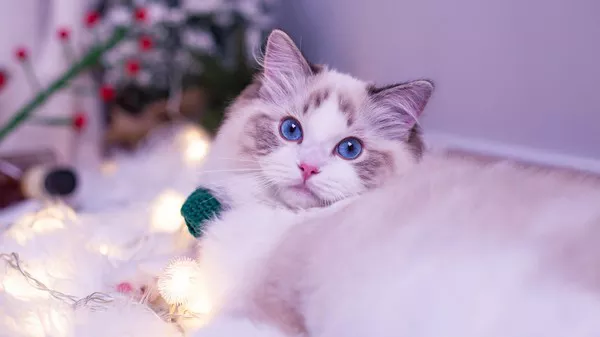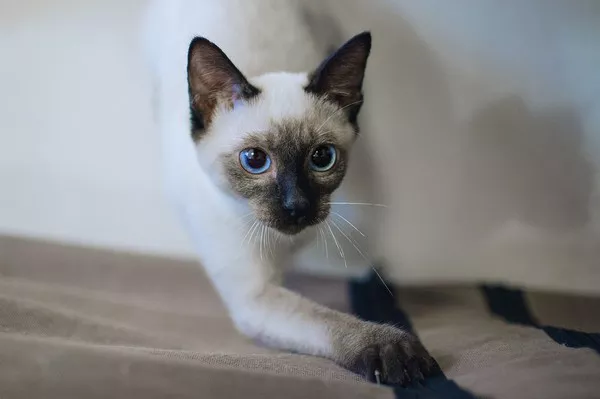Cats, known for their discerning palates and unique dietary needs, require a carefully balanced diet to thrive. As a responsible cat owner, determining the right combination of wet and dry food for your cat is a crucial aspect of feline care. In this comprehensive guide, we will explore the factors influencing the choice between wet and dry cat food, the nutritional benefits of each, and provide practical insights on how to determine the appropriate quantity to meet your cat’s individual needs.
Wet Cat Food:
Wet cat food, often found in cans or pouches, consists of a higher moisture content. This mimics the moisture content of a cat’s natural prey, contributing to hydration. Wet food can be especially beneficial for cats prone to urinary issues or those that struggle to stay adequately hydrated.
Nutritional Benefits:
Hydration: The high water content helps prevent dehydration, which is essential for kidney health.
Palatability: Many cats find wet food more palatable due to its aroma and texture.
Dental Health: Wet food can be gentler on a cat’s teeth, making it a suitable option for senior cats or those with dental issues.
Dry Cat Food:
Dry cat food, available in kibble form, has a lower moisture content. It is convenient, has a longer shelf life, and can contribute to dental health by promoting chewing. However, cats often need to drink more water when consuming dry food to maintain hydration.
Nutritional Benefits:
Dental Health: The act of chewing kibble can help reduce plaque and tartar buildup.
Convenience: Dry food is easy to store, handle, and can be left out for free-feeding.
Nutrient Density: Dry cat food tends to be more calorie-dense, requiring smaller portions to meet energy needs.
Factors Influencing the Decision
1. Age:
Kittens and senior cats may have different dietary needs. Kittens often benefit from the higher protein and calorie content in wet food, while seniors may find wet food more palatable and easier to eat.
2. Health Considerations:
Cats with specific health issues, such as urinary tract problems or dental concerns, may benefit from one type of food over the other. Consult with your veterinarian for personalized recommendations.
3. Preference:
Observing your cat’s preferences is essential. Some cats have a strong preference for one type of food, and accommodating these preferences can make mealtime more enjoyable.
4. Hydration Needs:
Cats are notorious for being inadequate water drinkers. If your cat struggles with hydration, incorporating more wet food into their diet can be a practical solution.
5. Cost and Convenience:
Consider your budget and lifestyle. While wet food can be more expensive, dry food offers convenience and a longer shelf life. Some cat owners opt for a combination of both to balance cost and nutritional benefits.
Determining the Right Quantity
1. Consult with Your Veterinarian:
Your veterinarian is your most reliable source for determining the appropriate quantity of food for your cat. Factors such as age, weight, health status, and activity level all play a role in crafting a personalized feeding plan.
2. Follow Feeding Guidelines:
Cat food packaging includes feeding guidelines based on your cat’s weight. Use these recommendations as a starting point, but remember that individual needs may vary.
3. Monitor Your Cat’s Body Condition:
Regularly assess your cat’s body condition by feeling for the ribs and observing their overall shape. A well-fed cat should have a defined waist, and ribs should be palpable beneath a thin layer of fat.
4. Adjust for Activity Level:
Cats with higher activity levels may require more calories. If your cat is particularly active, consider adjusting their portion sizes accordingly.
5. Be Mindful of Treats:
Treats can contribute to your cat’s daily caloric intake. Factor in treats when determining the appropriate quantity of wet and dry food to avoid overfeeding.
6. Monitor Weight Changes:
Regularly weigh your cat and track any changes. Sudden weight loss or gain may indicate a need for adjustment in their diet.
Creating a Balanced Diet: Combining Wet and Dry Food
1. Mix Both Types:
Combining wet and dry food can offer the benefits of both. The moisture from wet food contributes to hydration, while the dry kibble provides dental benefits.
2. Schedule Regular Vet Check-Ups:
Regular veterinary check-ups are crucial for monitoring your cat’s overall health and adjusting their diet as needed. Your vet can provide guidance on maintaining a well-balanced nutritional plan.
3. Observe Your Cat’s Response:
Pay attention to how your cat responds to their diet. Healthy cats should exhibit a glossy coat, maintain a stable weight, and have consistent energy levels.
4. Gradual Transitions:
If you decide to change your cat’s diet, do so gradually to avoid digestive upset. Mix the new food with the old, slowly increasing the proportion of the new food.
Conclusion
Determining how much wet and dry food to feed your cat involves a thoughtful consideration of their individual needs, preferences, and overall health. By understanding the nutritional benefits of each type of food and consulting with your veterinarian, you can create a feeding plan that ensures your feline companion receives the essential nutrients for a long and healthy life. Remember, the key is to strike a balance that aligns with your cat’s unique characteristics and enhances their overall well-being.

























